Day 8 - Hiroshima Side to Miyajima
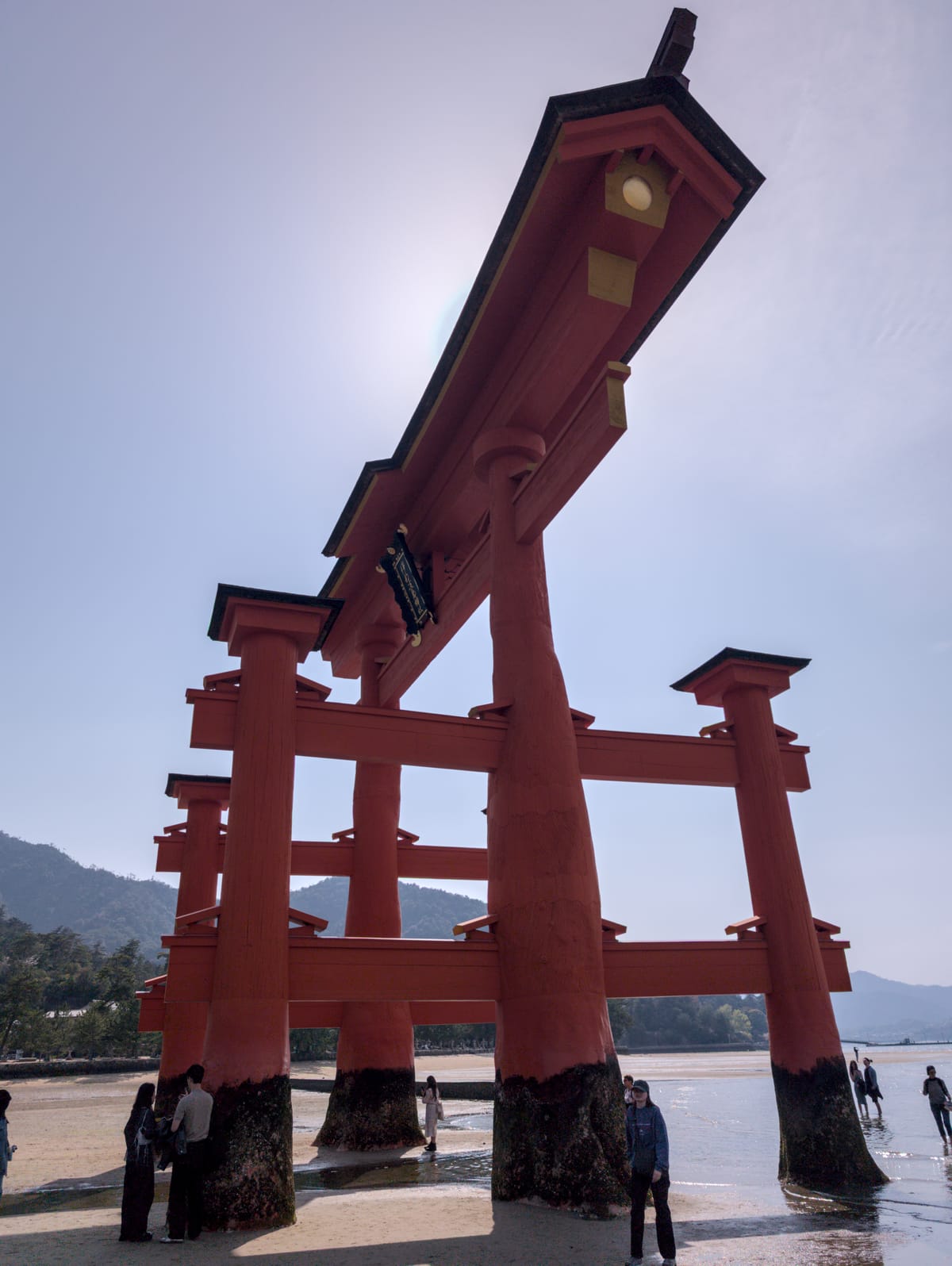
After the Atomic Dome, probably the most visited site around Hiroshima is the ancient shrine, Itsukushima Jinja, with it's huge off-shore bright orange Torii (gate). It takes about 30 minutes by what is essentially a commuter train and a short ferry ride to the island.
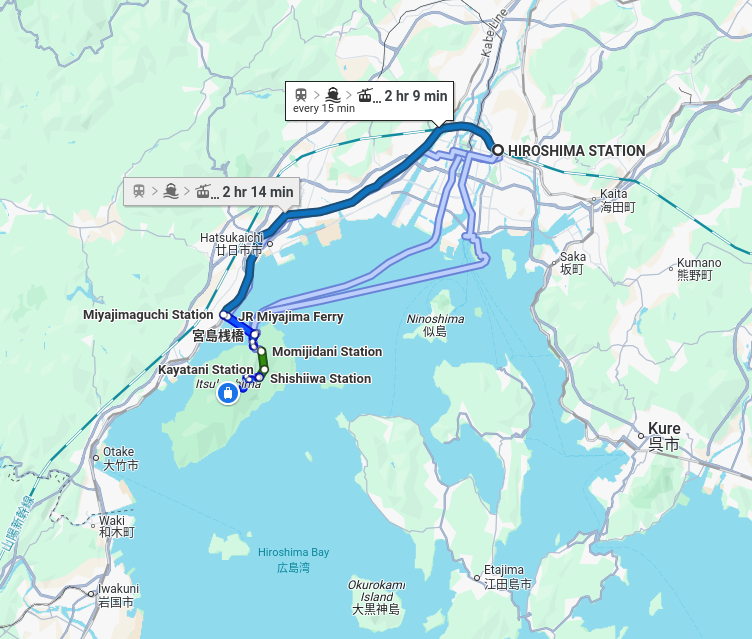
|
After the uneventful train trip from Hiroshima to the aptly named Miyajimaguchi (lit. Miyajima Mouth/Gateway), we join the crowds for the short ride on the Miyajima ferry. Vehicles also use the same ferries; there are about 2,000 island residents and all those valuable goodies need to get there. |

|

|

|
There are a number of old temples and shrines on the island - the oldest is a Buddhist temple buried deep in the forested hills in the middle of the island. But like most visitors, we're headed for the large Shinto shrine which defines the island to most people, Itsukushima Jinja.

The ferry terminal on the island is in a small village with lots of places for tourists to make local contributions 😄.

|

|
Like another tourist site nestled in a forest, Miyajima has deer as part of the environment. Not as many and not (quite) as aggressive, the Miyajima deer are prominent in the village and looking for food, which the signs say NOT to do. I did find one patiently waiting for it's regular restaurant to open...

|

|
Passing through the village, we begin the short walk to the Jinja's main compound.


|

|

|

|
The closer we get to the Jinja, the more prominent it’s most famous feature becomes – the giant orange “floating” O-Torii. Well, not "officially" orange but vermilion, according to Japanese government/Shinto sources.
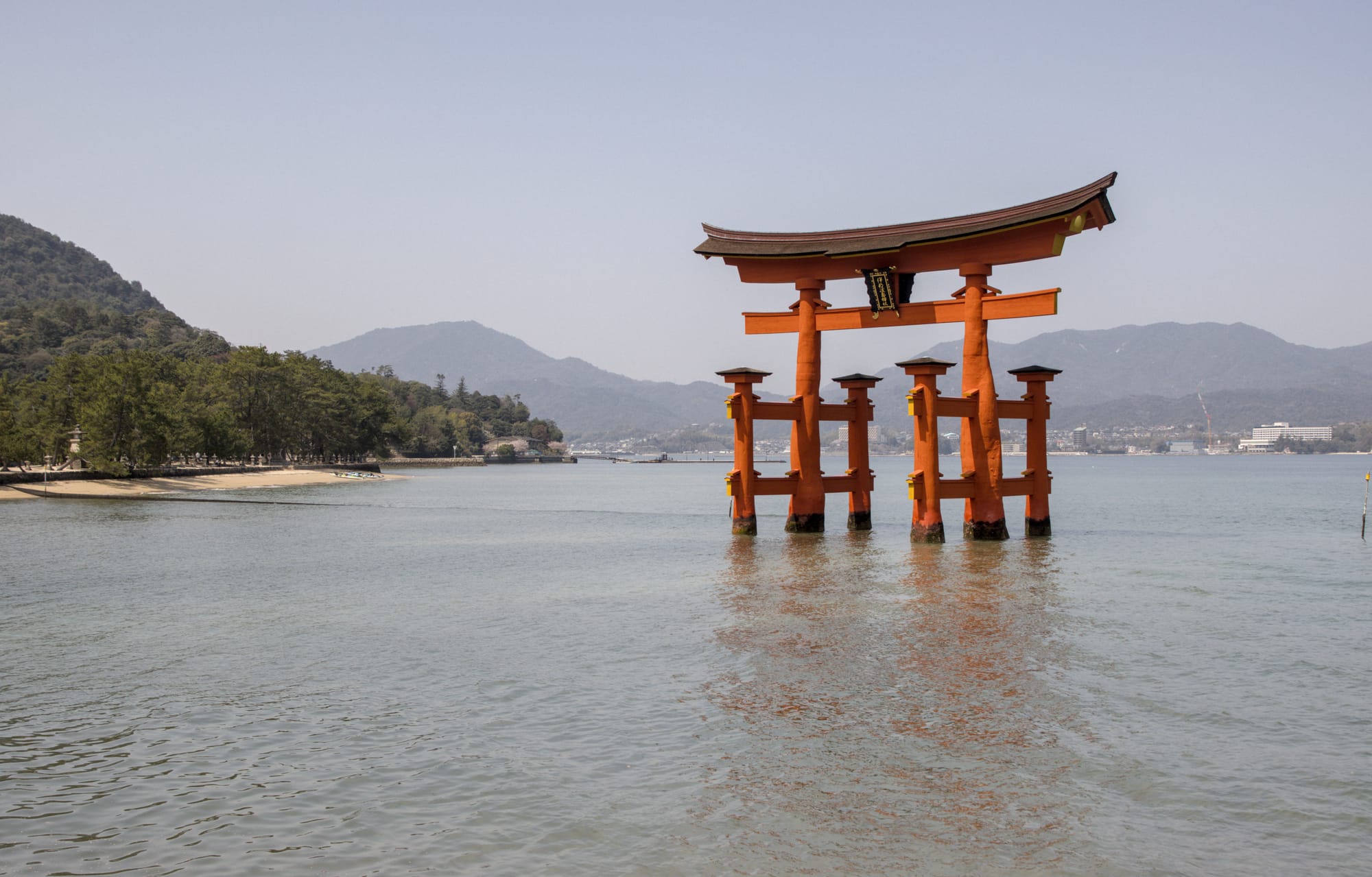

|
And vermilion is the color pallet for the Jinja. The color is meant to repulse evil and show vitality – it certainly is bright enough to accomplish this... |
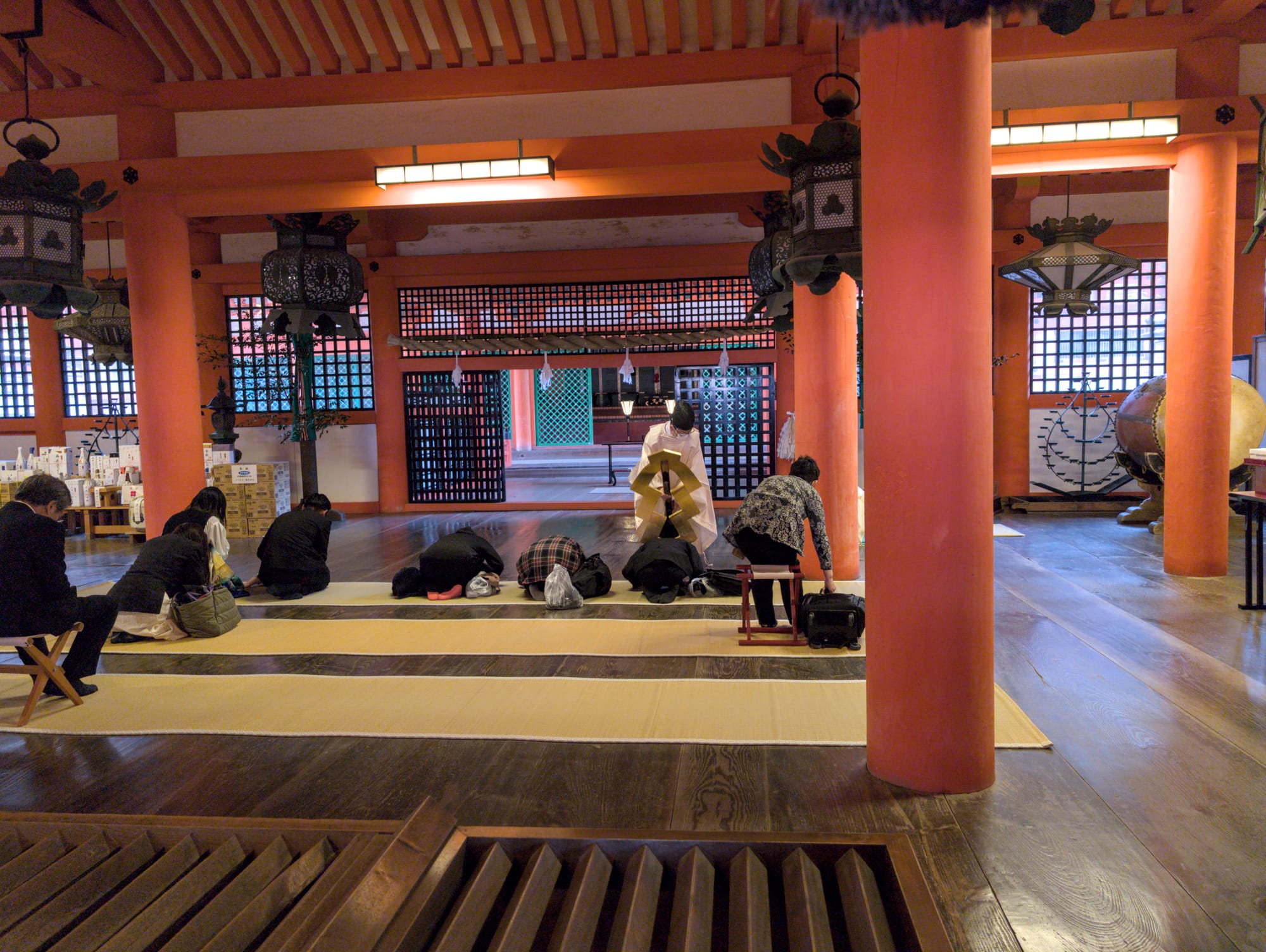
The main goal of most of the visitors is to get your perfect shot in front of O-Torii. For most folks, this means queuing in a line to go out to the end of a small pier to get an unobstructed view of it in the background. If you have a group and contribute to the shrine, you can get the photo with your members taken by one of the priests - maybe extra lucky that way...

|

|
After exploring the O-Torii side of the compound, we decided to head inland to see what else is around.

|

|
|
In the small settlement just outside the Jinja compound, we found a street of old merchant houses, many updated. One houses the Miyajima History and Folklore Museum which provides history of the village outside the Shrine. |

|

|

|
Wandering a bit more inland, we find another shrine - Hokoku Jinja / Senjokaku Pavilion. This is a "newer" side shrine dedicate to Hideyoshi Toyotomi, a major war lord just before the Tokugawa Shogunate (which closed down Japan).
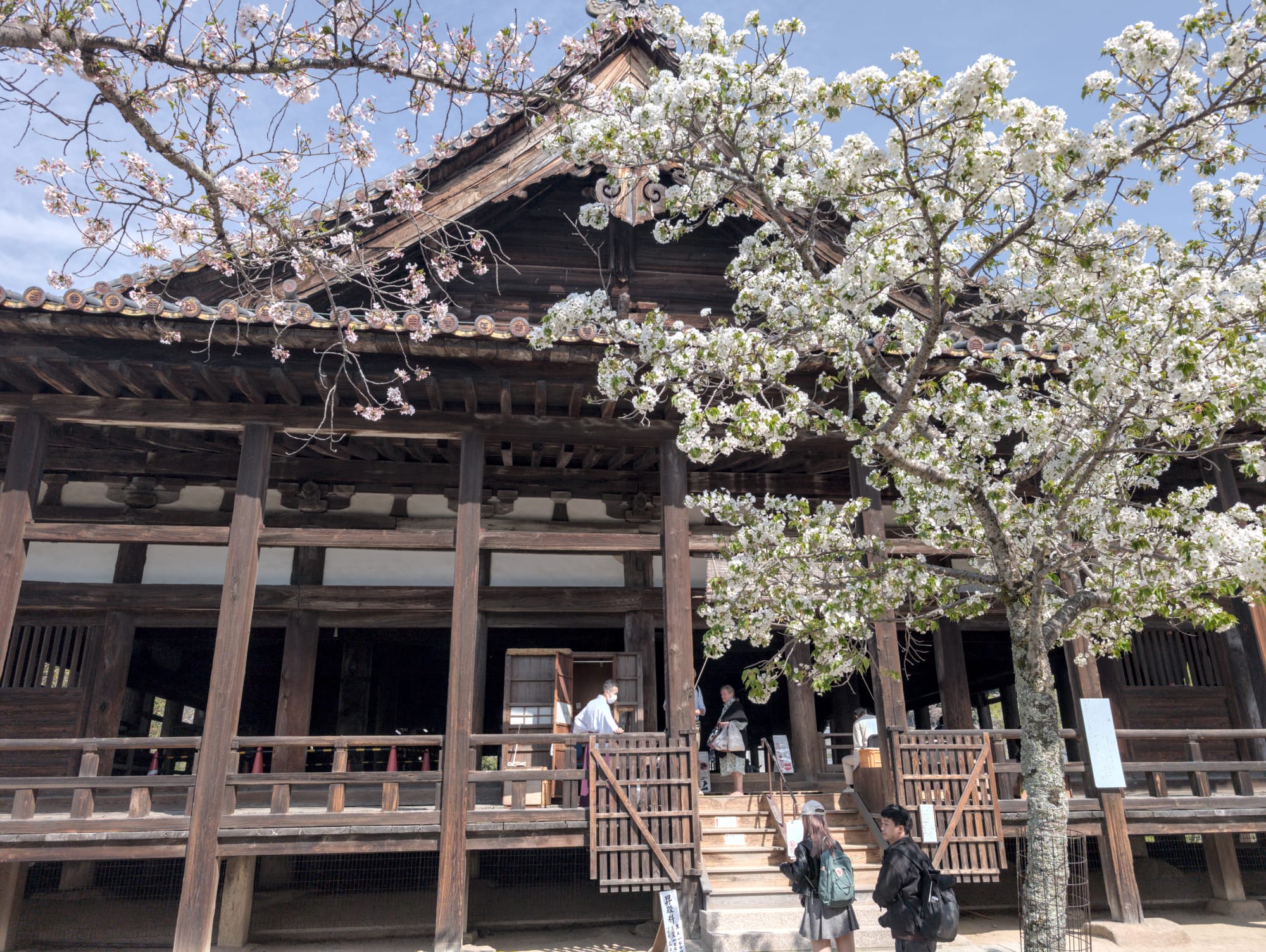

|

|
|
While we were exploring the inland areas, the ocean did what it usually does – lower the tide. Walking back to the sea side found that we could now walk out to the O-Torii and take close-ups of the huge gate. The people at the base gives prospective to the size of this thing. According to a presentation on it’s structure, there are something like 7 tons of rocks in the top crossbar to stabilize the structure. |

|
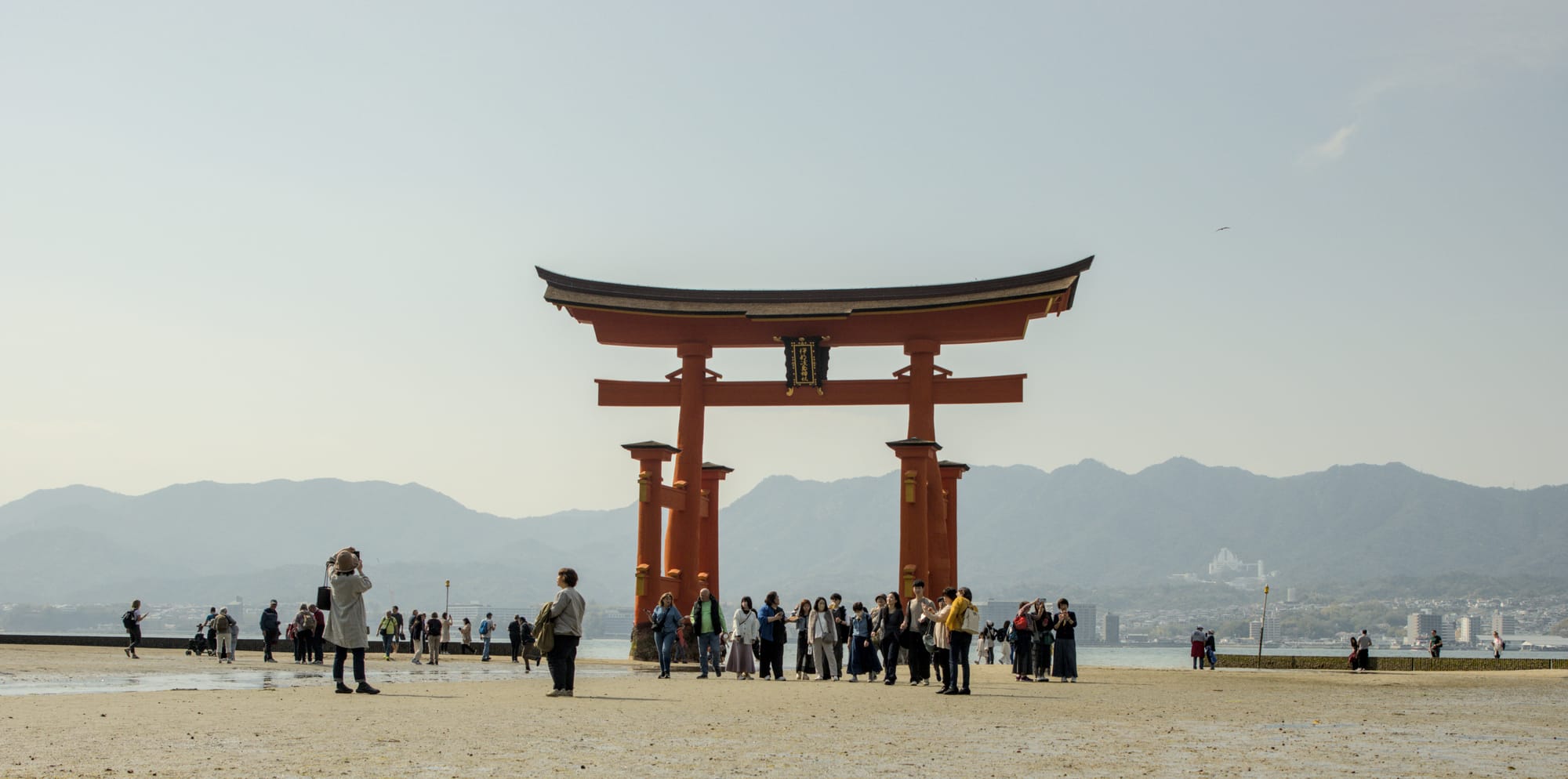

|

|

|
After a long day exploring, we check in with our deer friend still waiting for a table at his usual place and head home... |
As usual, a lot of images, and there are a LOT, are in the Gallery for this day.
